
If you want to be happier, healthier and mentally sharper, then the simplest thing you can do is to develop a good sleep habit.
Sleep is our body’s recovery mechanism. We need good sleep to think well, feel good and perform at our best. Research shows that students who don’t get enough sleep and/or sleep poorly are more likely to have a depressed mood and increased levels of anxiety.
But not only that, sleep is critical to the learning process. When you sleep, your brain is hard at work shifting information into your long-term memory, strengthening areas of importance and deleting irrelevant bits of information.
The bottom line is if you want to excel at school (and in life), then you need to make sleep a priority.
So why in the world is sleep usually the first thing students’ sacrifice to get more study done before exams?
Pulling an all-nighter before an exam (to cram more study in) is one of the worst things you can do.
As Dr Barbara Oakley states in her book A mind for numbers:
“Not getting enough sleep the night before a test [or exam] can negate any other preparation you’ve done.”
It’s like an athlete training for months for a big event but then going out clubbing the night before the event and waking up with a hangover the next morning. You know the athlete has just sabotaged their chances of success. The same thing applies with exams.
Lack of Sleep = Drunken Behaviour
Studies have found that a lack of sleep is as damaging to your cognition as being drunk.
So when you skimp on sleep the night before an exam, you’re effectively walking into the exam room as if you’ve had several beers or glasses of wine. You don’t need me to tell you that this is not a very good idea.
That terrible brain fog and seediness you feel after not getting a good night’s sleep is due to the build up of toxic waste in your brain. What a lot of students don’t realise is a good night’s sleep cleans out all the macro-molecular junk that has accumulated while you’ve been awake.
So we develop bad habits to help us stay awake and get through the day. You end up overriding your internal biology and putting unnecessary strain on your body. Let me explain …
The Stimulant-Sedative Loop
You’ve stayed up until the early hours of the morning studying. You wake up and you’re feeling pretty average. The thing about being tired is that you crave fatty and sugary snacks. You want caffeine to perk you up. So you have these things (e.g. chocolate and energy drinks) to get through the day, but then your brain is too hyped to sleep. So what do you do?
You take a sleeping pill. But the problem with sleeping pills is they don’t increase the amount of decent sleep you get.
So when you wake up, you feel really groggy (Ugh). You need a coffee or energy drink to get going. But that soon wears off and you need another energy drink. And then a pill to wind down …
You end up in this vicious cycle of overriding your internal biology. This is what sleep scientists refer to as the Stimulant-Sedative Loop.
Case Example: The King of Rock and Roll, Elvis Presley
A classic example of someone who was stuck in a Stimulant-Sedative Loop was the king, Elvis Presley.

Elvis had a lot of trouble sleeping. He was constantly worried that he wouldn’t get enough sleep to do a good show, so he’d take sleeping pills.
He was also addicted to amphetamines. These were legally available as an appetite suppressant, so for a time they helped keep Elvis’s weight down but they also kept him wide awake.
So when Elvis was on tour, here is what he’d consume each day:
He’d wake up in the afternoon and take ten medications to make him feel awake.
An hour before a show he’d take another seven medications.
Immediately before the show he’d have a shot of caffeine or a caffeine placebo.
After the show he’d take another five drugs and bedtime sedatives.
Elvis felt tired a lot of the time, so he craved fatty and sugary foods. One of Elvis’s favourite meals was a peanut butter, bacon and banana sandwich. Then there was the Fool’s Gold Loaf: a hollowed out loaf of sourdough bread, stuffed with an entire jar of peanut butter, an entire jar of grape jam and half a kilogram of bacon. And then it was deep-fried. It’s hard to imagine someone could each something like this. But Elvis did. Go Google it. You’ll be shocked.
In last few years of his life, Elvis was consuming between 10,000-12,000 calories a day.
He died at the age of 42.
Now I realise Elvis is an extreme example. But this is what happens when you don’t take care of yourself. You get sick. All your systems get thrown out of whack. So you need to cultivate better sleep hygiene than Elvis. Otherwise, you could get sick too.
Developing an Effective Sleep Ritual
Many of us expect to be able go from full speed to deep sleep in under a minute. But it doesn’t work like this.
You need to spend 20–30 minutes winding down before you go to bed.
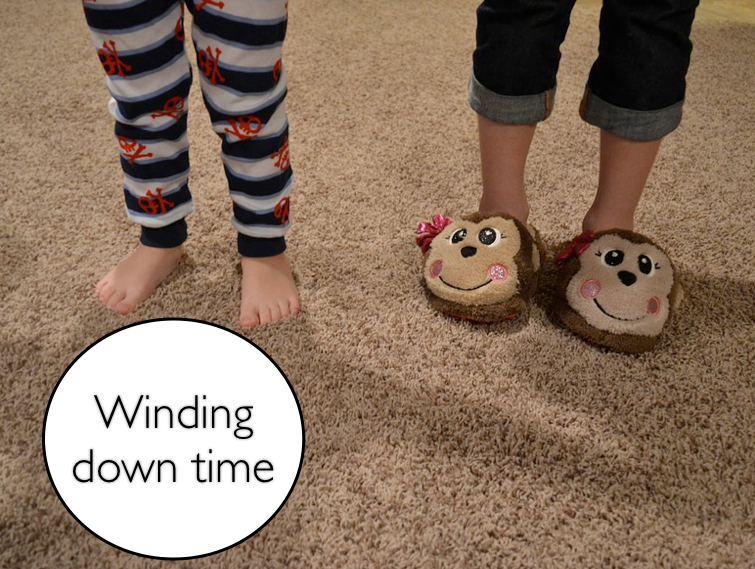
You can do a number of different activities in your wind down time, but there are two key things you want to do:
1) Engage in activities that calm your mind down.
2) Set up structures to help you get to bed at a reasonable hour.
Calming your mind down
Here are some different ways you can relax your mind before hitting the sack:
1) Dim the lights
2) Write and get your thoughts down on paper
3) Read a book (but nothing too mentally stimulating)
4) Switch off all electronic devices and remove them from your room
5) Have a bath
6) Meditate
7) Do some gentle yoga stretches
8) Listen to soothing music
9) Avoid refined sugar and caffeine
10) Have a warm cup of milk or herbal tea
If you don’t want to part with screens, change the blue light being emitted from the device to an orange light with an app like f.lux. The orange light won’t mess with your melatonin (a hormone that makes you sleepy).
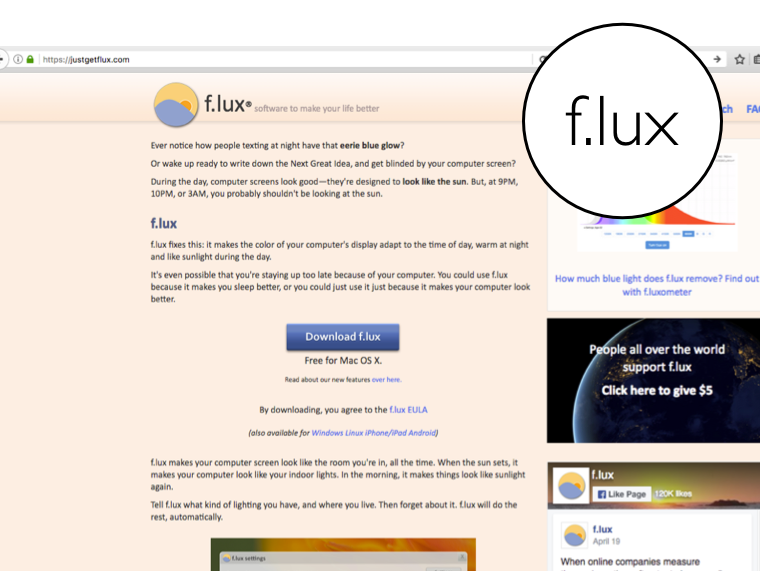
But just keep in mind that if you’re going to continue using your technological devices, it’s best to log off social media.
It’s not just the light that matters when it comes to your technological devices. It’s the fact that using these devices often displaces sleep and the media content consumed can be highly emotionally/mentally/physiologically arousing, thereby making it harder for you to fall asleep.
As Dr Lynette Vernon states in her PhD thesis titled, The role of problematic technology use for adolescents: The importance of sleep for wellbeing:
“For adolescents highly invested in social media, if negative feedback is received at night, prior to bedtime or after lights out then it is highly likely stimulating negative content elucidates an emotional arousal (for example, envy or anxiety) which impedes sleep onset.”
In other words, content may appear in your feed that makes you feel lousy. For example, pictures of friends having fun on exotic holidays may trigger feelings of jealousy. Now, if you’re at home alone (with no plans to go anywhere exciting anytime soon) then you may start to think your life is pretty average. Because you don’t feel great, it’s going to be harder for you to fall asleep and have a good night’s rest.
So it’s best to be screen free in your wind down time. Don’t risk feeling ‘Insta-jealousy’ or ‘Insta-bad’.
Getting to bed at a reasonable hour
I need a cue to remind me when it’s time to start winding down for bed. There are two cues that work well for me:
1) My alarm going off, and
2) Being booted off the Internet by an Internet blocker app.
In the evening, when I’m not feeling particularly sharp, it’s just too easy to faff around on the Internet until late at night. It will be 10pm and I’ll say to myself, “I’ll just write one more email” or “I’ll just check Facebook for one minute”. But one-minute is never actually just one minute. One minute is nearly always an hour or more.
If you use a Chrome Internet browser, you can get a Chrome extension called Stay Focused. This will lock you out of the Internet at set periods of time. For myself, I get booted off at 9pm. I can’t access any more sites until 6am in the morning.
To Sum Up
Sleep is critical to living a good life. It’s also critical to learning information effectively. With this in mind, it’s time to start prioritising good sleep to be the best version of you.
What could you do to get a better night sleep? Do you have any tips or suggestions on how to sleep better? Feel free to post your ideas below.
Share This:
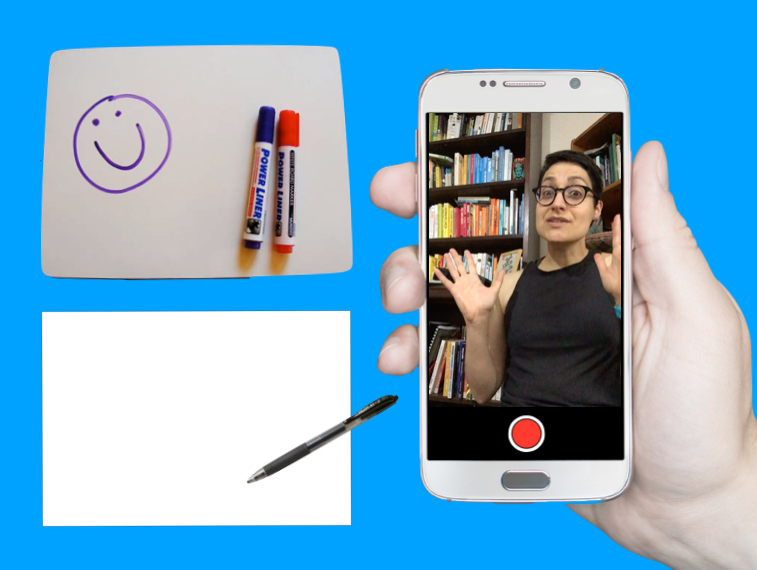
Research shows active recall (aka retrieval practice) is a highly effective strategy for remembering information. This strategy will take your studies and your grades to the next level.
Active recall involves bringing information to mind without looking at your books and notes.
I have spent the last 30 days experimenting with this excellent learning strategy. In this blog, I’ll share what I did and how I kept the process interesting for my brain.
I no longer need to study for tests and exams.
So, why did I spend 30 days using active recall strategies?
In my line of work, I need to constantly come up with new and original content to present to students. I also need to memorise this content. Why?
Because if I was to read from a sheet of notes or text heavy slides that would be really boring for students. I want to connect with students and to do this, I have to be able to deliver the content off the top of my head with speed and ease.
This is where active recall enters the picture.
Active recall helps to speed up the learning process. It allows you to learn more in less time.
Below I share some of the ways I use active recall to learn new presentation content. Keep in mind, you can use all of these strategies to prepare for an upcoming test or exam.
Whiteboards are wonderful learning tools. Here’s how I use a whiteboard to do active recall . . .
I push my speech notes to the side, so I can’t look at them. Then I grab a marker and say to myself, “What can you remember? Go!”.
I write out everything I can remember on the whiteboard. Once I’ve exhausted my memory, I pick up my notes and check to see how I went (using a red marker to make corrections).
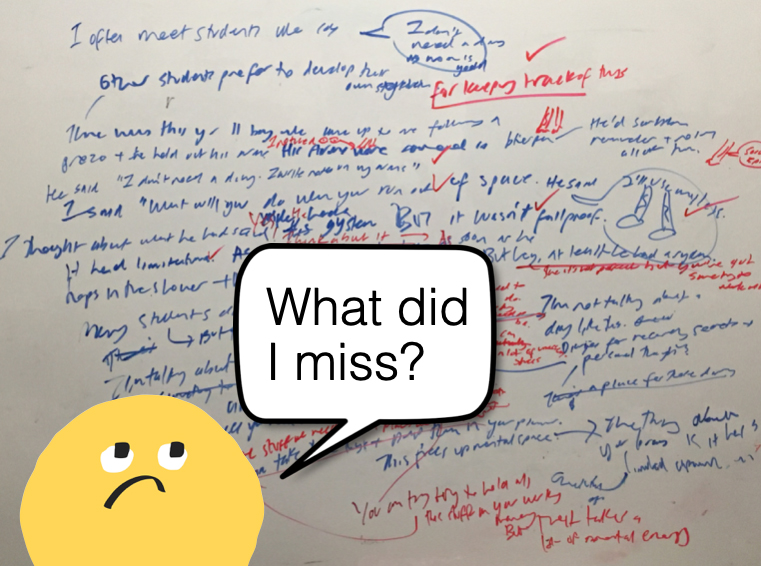
No whiteboard? No problem!
I pick up a pen and sheet of paper and start scribbling out whatever I can remember on the topic. When I get stuck, I pause and take a few deep breaths as I try to scan my brain for the information.
I regularly remind myself that it is okay to not remember the content. “This is how the process goes!”, I say to myself. There is no point beating myself up. That only leads to feelings of misery and not wanting to do active recall practice.
After having a shot at it, I take out my notes, pick up a red pen, and begin the process of checking to see how I went.
Sick of writing? I get it.
Try drawing out the information instead. Alternatively, you can use a combination of words and pictures, which is what I often do.
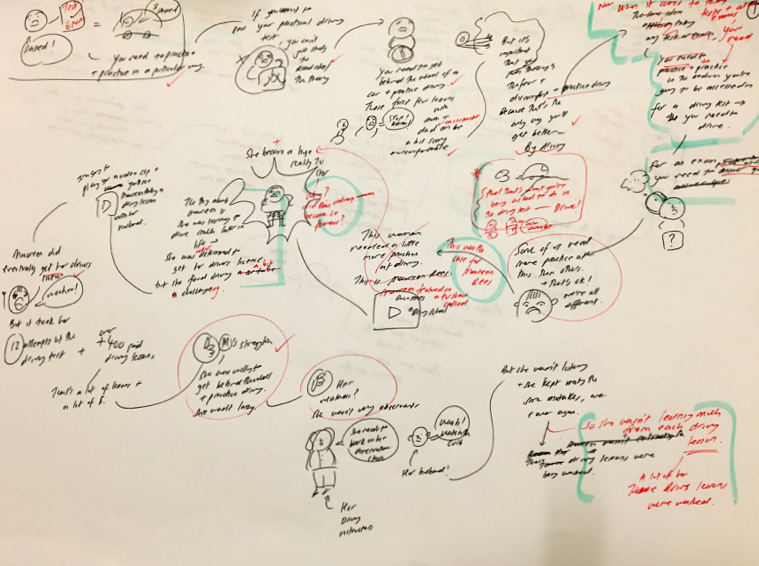
Grab a blank piece of paper (A3 size is best) and create a mind map of everything you can remember on a topic (no peeking at your notes). Then check your notes or the original mind map to see what you remembered correctly and incorrectly.
Writing and drawing out information can take time. If you want to speed up the process, you can talk to yourself.

But don’t do this in your head. It’s too easy to just say “Yeah, yeah, I know this stuff!”. You need to speak it out loud as this forces you to have a complete thought. Then, check your notes to see how you went.
The only downside with this approach is you don’t have a tangible record of what you recalled, which brings me to the next strategy . . .
I make videos of myself presenting the content (without referring to my notes). Although I use special software and tools to make my videos, you don’t need any fancy equipment. Your phone will do the job. Here’s what you can do . . .
Set your phone up so the camera is facing you. Now hit the record button and tell the camera what you’re going to do active recall on. Have a shot at explaining the idea. Then stop recording and hit the play button.

Watching yourself struggle to remember information is often hard viewing. But this is where it’s super important to double down on telling yourself kind thoughts (e.g., “I’m still learning this content. It’s going to be rusty and feel clunky – that’s okay!”).
You need to take a deep breath and keep watching because the video will give you valuable feedback.
For example, if you stop midsentence and you don’t know how to proceed, that tells you something: you don’t know this stuff so well! Make a note. This part of the content needs your attention.
Hand your notes over to a friend, parent, or sibling. Now get them to ask you questions on the content.
I sat with my mum and showed her a print out of my slides for a new presentation. The slides were just pictures (no text).
As I went through the slides, I explained the ideas to mum. I made notes of any sections I was rusty on. Mum also asked lots of questions, which allowed me to think more deeply about the content.
When it came crunch time (a few days before the final presentation), I printed out my presentation slides (16 per page) and used each slide as a prompt. I’d look at the slide and say, “What do I need to say here?”.

Sometimes I wrote out what I’d be saying in relation to each slide (without looking at my notes). Then I checked my original notes to make sure I hadn’t forgotten anything.
It’s really important that you don’t skip the stage of checking to see how you went, especially as you become more confident with the content.
At times, I found myself thinking “I know this stuff! I don’t need to check my notes” but then another part would say, “You better just check . . . just to be on the safe side”.
I’m glad I forced myself to check because more often than not I would discover that I had missed a crucial point.
Zines are cute little booklets you can create on any topic you like. They are fun to make, so I thought I’d try making a mini zine on the main points of some new content I had to learn.
I folded up an A4 page into a booklet and then I sketched out the main points on each panel.
I create a deck of flashcards on some key ideas (question on one side and the answer on the back) and then I test myself with them.
I read the question and before flipping the card, I write out the answer on a sheet of paper or say it out loud. Then I check to see how I went.
The beauty of flashcards is they are small and portable (they can easily fit in your pocket or bag). Whenever you have a spare minute or two, you can get a little active recall practice in.
It’s not enough to do active recall just once on the content you need to learn. For best results, you want to practice recalling the information several times over a period of time.
I didn’t follow a strict schedule for the 30 days. I had my notes for each important chunk of information I had to learn pinned to eight different clipboards.
Every morning, I’d pick up a different clipboard and I’d practice that specific content. I knew as long as I’d had a good night’s sleep in between practice sessions that the information was being strengthened in my brain.
Doing active recall is a bit like doing a high intensity workout: it can be exhausting. But you must remember, just like a high intensity exercise session is an effective way to train and get fit, active recall is an effective way to learn. Unlike less effective strategies (e.g., rereading and highlighting), you can learn a lot in a short space of time with active recall.
The key is to expect the process to be a little uncomfortable. Don’t fight the discomfort. If you trust the process and persevere, it won’t be long before you begin to see amazing results.
Just because active recall is challenging to do that doesn’t mean you can’t have fun with it.
Using a combination of different active recall strategies is one way to keep things fresh and interesting for your brain. But you may wish to try the following things to add a little boost of fun to your active recall sessions:
• Use a different type of pen
• Use a different coloured pen
• Change the type of paper or notebook you use (e.g., instead of using lined paper, use blank A3 paper)
• Incorporate movement into your active recall sessions (e.g., walk and test yourself with some flashcards)
• Change your study environment (e.g., go to the library or study outside)

Like I said, active recall is challenging to do, especially when you first start learning new content. You can feel awkward and clumsy. For this reason, it’s easy to make excuses to get out of doing it (e.g., “I’m too tired”, “I’m not ready to do it”, and “It’s not the right time”).
This is where you need to harness the power of habits.
Find a set time in your day to do a little active recall practice. For instance, during my 30 days of active recall, I scheduled my practice sessions for first thing in the morning. I knew after I washed my face, I would sit down to practice.
Incorporating active recall into my morning routine worked really well for me. I was getting the hardest thing done first thing in the day. And once it was done, I could relax. It was done and dusted!
At a certain point, I became more confident with the content and I found I was on a roll. I felt motivated to do active recall.
This is when I started to look for spare moments in the day to squeeze in a few extra mini practice sessions.
For example, one day I found myself waiting in a car. I grabbed a paper shopping bag and started scribbling out the content onto the bag. As soon as I got home, I checked the shopping bag against my notes.
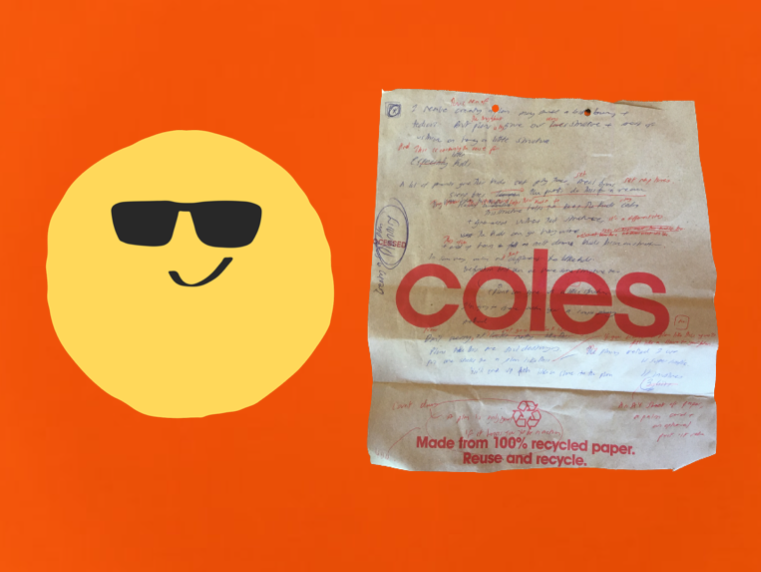
I hope you can see that there’s no one set way to do active recall. This is a highly effective strategy you can be creative with. As long as you’re testing yourself and checking to see how you went, you can’t go wrong.
And if you do make a mistake? It’s no big deal. If you check to see how you went, you won’t embed the error in your long-term memory.

This means you need to prepare yourself mentally and physically for them.
You can work so hard to memorise large quantities of information for an exam, but if you’re not mentally and physically prepared, all that hard work can sadly go to waste.
When it comes time to take your exams, you have to relate to yourself as a professional athlete. Leading up to the day of the big performance (i.e. the exam), you need to eat nutritious food, be in the right frame of mind, manage your nerves, and allow your body to rest. These simple things can make all the difference to your exam performance.
You may be thinking “But isn’t this just common sense?”
It is! But creating healthy habits takes time and practice.
It’s one thing to intellectually know you should be eating well but it’s another thing altogether to incorporate healthy meals and snacks into your lifestyle.
I see a lot of students drinking energy drinks, getting very little sleep, and eating highly processed foods in the days leading up to exams. I have to admit, there was a time when I engaged in these behaviours too. I can tell you from personal experience, this is a recipe for mediocre grades and a miserable existence.
Here are my top 10 tips to prevent burnout and boost exam performance:
Sleep is critical to the learning process, exam performance, and wellbeing. Yet it’s usually the first thing students sacrifice to get more study done.
If you miss two hours of sleep each night for a week, the cognitive effects are as bad as going without sleep for two days straight!
Studies have also found that if you stay awake for 18 hours straight that’s like having a blood alcohol level of 0.05. In other words, it’s like being legally drunk. Your ability to focus, think, and learn will be seriously impaired.
You can’t adapt to getting less sleep. As adolescents, you need about 9-10 hours of sleep per night to be as alert as possible when you wake up.
If that feels unachievable, try to just get an extra 15 minutes of sleep tonight. Gradually increase this each night until you reach your target.
Often students stop exercising when they start preparing for exams. They think “I don’t have time to exercise!”. It’s as if they think they must spend every moment studying. Don’t fall into this trap.
Movement is your friend when it comes to studying for exams.
Research shows engaging in regular physical movement will help you to study more effectively. Firstly, it’s a great way to relieve stress and release feel good chemicals. Secondly, it gets the blood flowing more efficiently to your brain, which can give you a cognitive boost.
One study found students who engaged in 5 minute movement breaks every 17 minutes during a lecture retained more information and could focus better.
Every time you engage in a short movement break, you’re enhancing your study sessions.
Research has found that students who skip breakfast experience a decrease in cognitive performance and alertness compared to students who eat breakfast.
Eating a nutritious breakfast will give you a cognitive boost before an exam. It will also help you to feel fuller for longer, stabilise your mood, and give you plenty of energy to get through the exam.
Here are some healthy breakfast ideas:
Muesli or porridge with nuts and fresh fruit (e.g., berries) Wholemeal toast with a variety of toppings (e.g., baked beans, tomatoes, and avocado) and a piece of fruit A healthy homemade smoothie (click here for my brain boosting smoothie recipe)

Your brain requires adequate hydration to function properly. Drinking water ensures that your brain receives the necessary fluids to perform tasks efficiently, such as retaining information and problem-solving.
Take regular sips of water as you study. It’s a good idea to have a glass of water or a reusable drink bottle within arms reach.
You may even want to create a tiny habit to remind yourself to engage in this simple behaviour (e.g., “After I finish answering a practice exam question, I will take a sip of water”).
Many years ago, I started thinking that my teachers and lecturers were out to get me. I thought they would mark me down wherever they got the chance. As a result of this distorted thinking, I became too scared to write anything in one of my first tests at law school. After receiving a terrible grade (5%), my brother said to me:
“Remember sis, your teachers want you to do well. They will try to give you marks wherever they can. It’s in their best interest to do so.”
Don’t worry about writing a perfect answer. If you’re unsure, be brave and still write something down. Even if it’s just a few dot points, it’s better than nothing. You may not get any marks for it, but your teachers won’t take marks off.
Just remember, most of the time your teachers are on your side and they want you to succeed. When you do well, it makes them look good.
Chances are there will always be something that you could have studied more thoroughly come the day of your exam. But on the morning of an exam, you can’t do much about that, so there’s no point worrying. Worrying will just deplete your finite energy, which you need to conserve for the exam.
Instead of worrying, try saying this to yourself before each exam:
“I now know so much more than I did before. I’ll be able to answer many questions in this exam.”
Telling yourself this positive micro-thought will allow you to enter the exam in a calm and confident frame of mind.
It’s normal to feel a bit nervous before an exam. But there are certain things and people that can push your anxiety levels into dangerous territory and impair your exam performance.
For example, coffee and energy drinks will skyrocket your stress levels. Similarly, hanging out with people who have a lot of nervous energy and are venting about the exam (“I’m going to fail!” and “I hardly studied!”) are going to leave you feeling distracted and a little jangled.
Before the exam, do your best to isolate yourself from these people. If you’re worried about offending someone who is venting to you, you could say “I’m sorry but I really need to do some last minute cramming”. Then proceed to pull out your notes and pretend to read them.
How many times have you stayed back after an exam to talk to your friends about what you put for each question? Have you ever felt terrible after doing this?
It can be reassuring to know that you wrote the same answer as your friends. But if you find out that you wrote something completely different, you may start to second guess yourself. If you have another four or five exams to go, this may throw you off your game.
This is why I don’t recommend engaging in a postmortem of the exam until you get your results/exam paper back.
When you walk out of the exam room, tell yourself:
“That exam is over. There’s nothing I can do to change how I went. It’s time to move on!”.
You could imagine yourself locking the exam in a box and throwing it off a cliff or rolling it up and stuffing it in a bottle and throwing it out to sea. The point is you need to mentally disconnect from that exam and focus on studying for the next one.

If you come across a question that you’re not sure how to answer, stop for a moment and take a few deep breaths (in for the count of 4 and out for the count of 4).
A simple breath activity you can try is the Box Breathing Technique. This involves imagining yourself breathing along the sides of a box (breathing in for the count of four on one side, out for the count of four on the next side, etc). Repeat this 2-3 times. Then take a look at the question again.
If you are still unsure how to answer the question, move on to another question.
The worst thing you can do is panic (remember, stress impairs your ability to think and recall information).
By engaging in Box Breathing, you can help yourself to remain in a calm and stable state.
Many of us are familiar with writer’s cramp. This can be caused by gripping onto your pen too tightly. Try loosening your grip a little.
Alternatively, experiment with a range of different pens. Some biros require you to press down hard on the page to make a mark, but not gel pens. The ink just flows onto the page!
The reality is, even with a good gel pen, your elbow will start to hurt at some point if you’re taking a 3 hour exam. When it does start to hurt, have a rest for a few seconds (yes, you have time to do this). Stretch your arm out. Shake it a little.
Treat each exam like a mountain hike rather than a 100 metre sprint. Resting for a few moments here and there will be time well spent and will enhance your overall performance.
These simple strategies can help to elevate your exam performance. My advice is to start small. Even if your exams are several weeks away, select one or two of these ideas and start testing them out today. At first, the strategies will require a bit of mental effort. But like anything in life, if you persevere they’ll become second nature to you and they’ll just be things you do without even thinking.
Want to learn more exam strategies? Click here to download a free copy of 70 ways to ace your exams.

A good night’s sleep improves every area of your life. This includes your emotional wellbeing, memory, metabolism, ability to focus, stress response, and much more.
One theory is Revenge Bed Time Procrastination.
Although this concept originated in China, Revenge Bed Time Procrastination is a global phenomenon.
The idea of Revenge Bed Time Procrastination is simple . . .
When you feel like you don’t have much control over your day (due to work, study, and/or sports commitments), you sacrifice sleep to engage in fun activities to regain some sense of freedom.
Instead of sleeping, you stay up late watching your favourite shows, playing video games, and/or chatting with friends online.
But this comes at a cost. By seeking revenge on your work/school day and sacrificing sleep, your health suffers.
Your ability to study and learn is also negatively impacted. When you’re sleep deprived, the hippocampus (that’s the part of the brain associated with memory and learning) ceases to function properly. This makes it incredibly difficult to retain information when you study.
High school students need about 9-10 hours each night.
Adults need about 7-9 hours.
But it’s not just quantity of sleep that matters. It’s quality, too.
Getting up throughout the night to check your phone destroys your sleep quality.
The good news is there are a range of simple things you can do to get more and better sleep. Since you spend about a third of your life asleep, it makes sense to learn how you can optimise this area of your life.

Getting some sunshine first thing in the morning when you wake up can help you sleep better at night. Even just 10 minutes of sunshine can work wonders. You could create a tiny habit of eating breakfast outside or going outside for a short walk, run and/or workout.
If you use your phone as an alarm, there’s a good chance you’ve developed the habit of sleeping next to your phone. When your phone is in sight and within arms reach, it’s tempting to keep checking your phone.
Co-founder of the Centre for Humane Technology Tristan Harris says sleeping with your phone next to you is like sleeping next to a giant doughnut. It’s really hard to resist.

In addition, the light that is emitted from your phone messes with your ability to produce melatonin (a hormone that makes you feel sleepy).
This explains why so many people struggle to fall asleep. And it’s why many sleep scientists recommend charging your phone in another room at least 30 minutes before you go to bed. Out of sight, out of mind.
It’s not just the light from screens that keeps you awake at night. Scrolling through social media and playing video games are mentally stimulating tasks. These apps and games are designed to hook you in and hijack your attention.
The problem is this is the polar opposite to how you need to feel before you go to bed!
To get a good night’s sleep, you need to slow down and calm your mind, which brings me to the next point . . .

When I was a child, a character called Fat Cat would come on the television at 7.30pm every night. Fat Cat would get into bed, wave, and say “Goodnight boys and girls”.
Fat Cat was a big fat prompt for bedtime. He was effectively saying to parents, “Put your children to bed before the adult programs start”.
As children, most of us had some kind of winding down time before bed. Our parents would give us a bath, put on our pyjamas, and read us a book. These activities helped to calm our minds.
But as we got older, many of us abandoned winding down time.
It’s time to bring back winding down time and create bedtime rituals. Engaging in just 15-30 minutes of calming activities before bed can make a massive difference to your sleep quality.
My bedtime ritual involves the following:
• Charging my phone in another room
• Putting on my cosy pyjamas
• Dimming the lights in my bedroom
• Reading a book (nothing too exciting or work related)
• Writing down my wins for the day

If you find yourself having to fluff your pillow up or flip it like a pancake throughout the night, it could be time for a pillow upgrade.
If you keep putting off shopping for a new pillow, I don’t blame you. Shopping for pillows can be frustrating and disheartening. I have purchased many expensive pillows that I haven’t been able to sleep on (e.g., too high, too low, or too firm). But I recently found the perfect pillow.
So, my advice is don’t give up. Keep searching for the perfect pillow.
Here are my pillow shopping tips:
• Go to a bed store, find a mattress that is similar to your own, and test out a range of different pillows on that mattress.
• Don’t be afraid to take a 15 minute power nap with the pillow in the shop!
• Some sales assistants will try to sell you really expensive pillows ($200AUD+) but the most expensive pillow may not be the best pillow (I ended up buying a $40 pillow).
I had a stack of Guardian Weekly news magazines that I wanted to get through. I thought, “Why not create a tiny habit of reading the news before bed?”
This was a terrible idea.
On the night’s I read the news before bed, I noticed that I would have nightmares.
So my advice to you is this: don’t read the news right before going to bed! Find a better spot in your daily routine to do it (after breakfast or lunch work works for me).
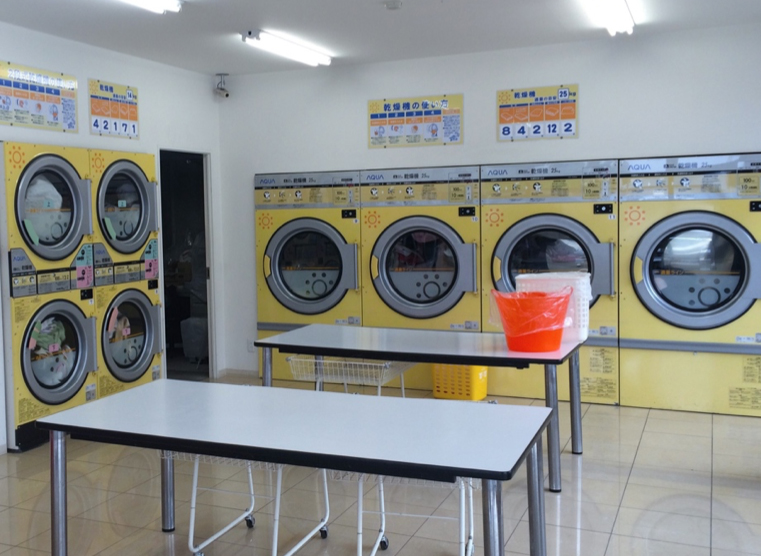
A survey by Sleep Junkie found that people who washed their sheets frequently (every 12.8 day on average) reported sleeping better than people who washed their sheets less frequently.
There’s something really nice about getting into a bed with clean sheets. Why not change your bed sheets and see how you sleep tonight?
If your mind is racing, grab a piece of paper and write out what you’re thinking. It doesn’t have to make sense or even look nice.
There is something mentally liberating about getting your thoughts out of your head and down on paper. When I write my thoughts down, I gain a little distance from them. Those thoughts are also less likely to keep looping through my head on repeat.
When you sleep, you want your room to be dark. The darker the better.
If you can see little green or red lights coming from devices, put tape over them. Block out curtains can work really well, too. But if you’re not in a position to change your curtains, I recommend investing in a good eye mask to block out the light.
I have experimented with lots of sleep masks over the years, but my favourite is a sleep mask I was gifted from Baxter Blue (you can check it out here). This eye mask is a little pricey but it’s super comfortable as it doesn’t apply any pressure on your eyes. Most importantly, it does a great job of blocking out the light.
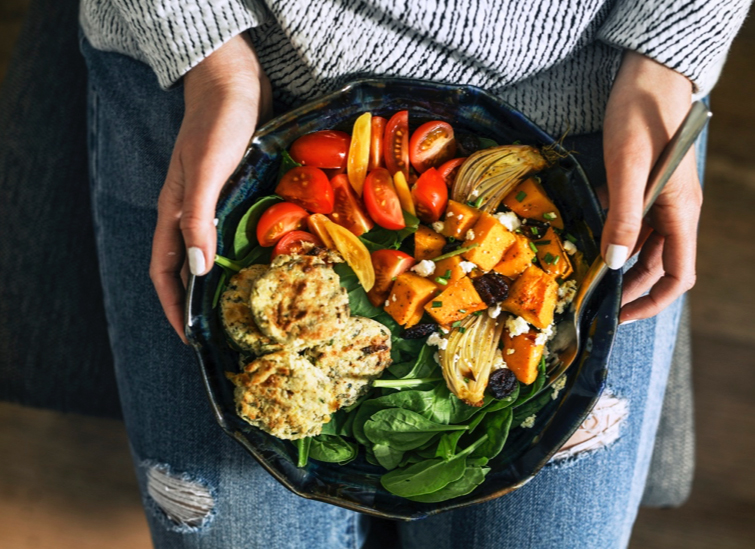
Studies show eating a fibre rich diet can lead to better sleep.
Where do you get fibre from?
From plant foods (i.e., beans, vegetables, fruits, and wholegrains).
There is no fibre in meat, eggs, dairy, and junk food.
Add an extra serve of vegetables to each of your meals (including breakfast). If you’re not a fan of vegetables, find ways to hide them in your meals. For example, whenever I add a handful of spinach or kale to a smoothie, I can’t even tell it’s in there!
There are many different things you can do to improve your sleep each night. The key is to commit to making sleep a top priority. Commit to trying a few of these strategies.
Getting healthy sleep is one of the simplest ways you can improve the way you feel, think, and learn. Let’s face it, everything feels easier after a good night’s sleep.
Dr Jane Genovese delivers interactive sessions on learning to learn, combating procrastination, exam preparation, how to focus in the age of distraction, habit formation and much, much more!
Get FREE study and life strategies by signing up to our newsletter:
© 2024 Learning Fundamentals